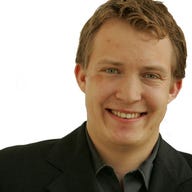Deutsche Telekom plans to double super-fast broadband connections by 2016

Germany's incumbent telco Deutsche Telekom (DT) has been under pressure from competitors over the last few years, especially as cable-based broadband access has soared in Germany — the ISP Kabel Deutschland alone now has over 10 million customers.
It's a situation Rene Obermann, CEO of Deutsche Telekom, is looking to change. According to an interview with Obermann on the telco's website, DT now delivers VDSL broadband to 12 million households and is in the process of rolling out fibre too. If everything goes to plan, the company wants to vastly increase its footprint over the coming years, providing super-fast broadband access to around 24 million households by 2016.
According to Obermann, the expansion of its super-fast network will combine fixed-line fibre technologies and mobile, such as HSPA or LTE.
DT prefers fibre-to-the-cabinet (FTTC) over fibre-to-the-premises (FTTP) due to the high cost of laying the cable itself and recabling buildings, Obermann said, but wants to raise the throughput of the copper last-mile significantly using a technology called 'vectoring'. This is a type of 'noise-cancelling' technology that has the effect of cutting interference on VDSL lines.
Vectoring will enable DT to double the rates achieved on VDSL, bringing download speeds up to 100Mbps and upload speeds up to 40Mbps. According to Obermann, vectoring has to be authorised by local regulators, as has already happened in Belgium, with plans for vectoring also underway in Austria.
"It would be nice if we could use this technology in Germany — the broadband targets of the federal government could be achieved much more quickly," the CEO added.
According to Obermann, vectoring will also mean that rural areas get more from their broadband. "With vectoring we could supply the rural areas with much higher speeds. And where the expansion cannot be justified economically, the state could close the funding gap. We are talking about a Germany-wide opportunity to bring super-fast internet access at a reasonable cost," he said.
Although Germany is the biggest economy in Europe, there are still a lot of areas of the country with a bad broadband connection. In a recent study by the Breitband Investionsindex (Broadband Investment Index), most of these areas are in the eastern region of Germany.
Improving general broadband availability has been one of the goals of German chancellor Angela Merkel. By 2014, more than three-quarters of the population should be able to get broadband access of 50Mbps or faster, Merkel told visitors to CeBIT last year.